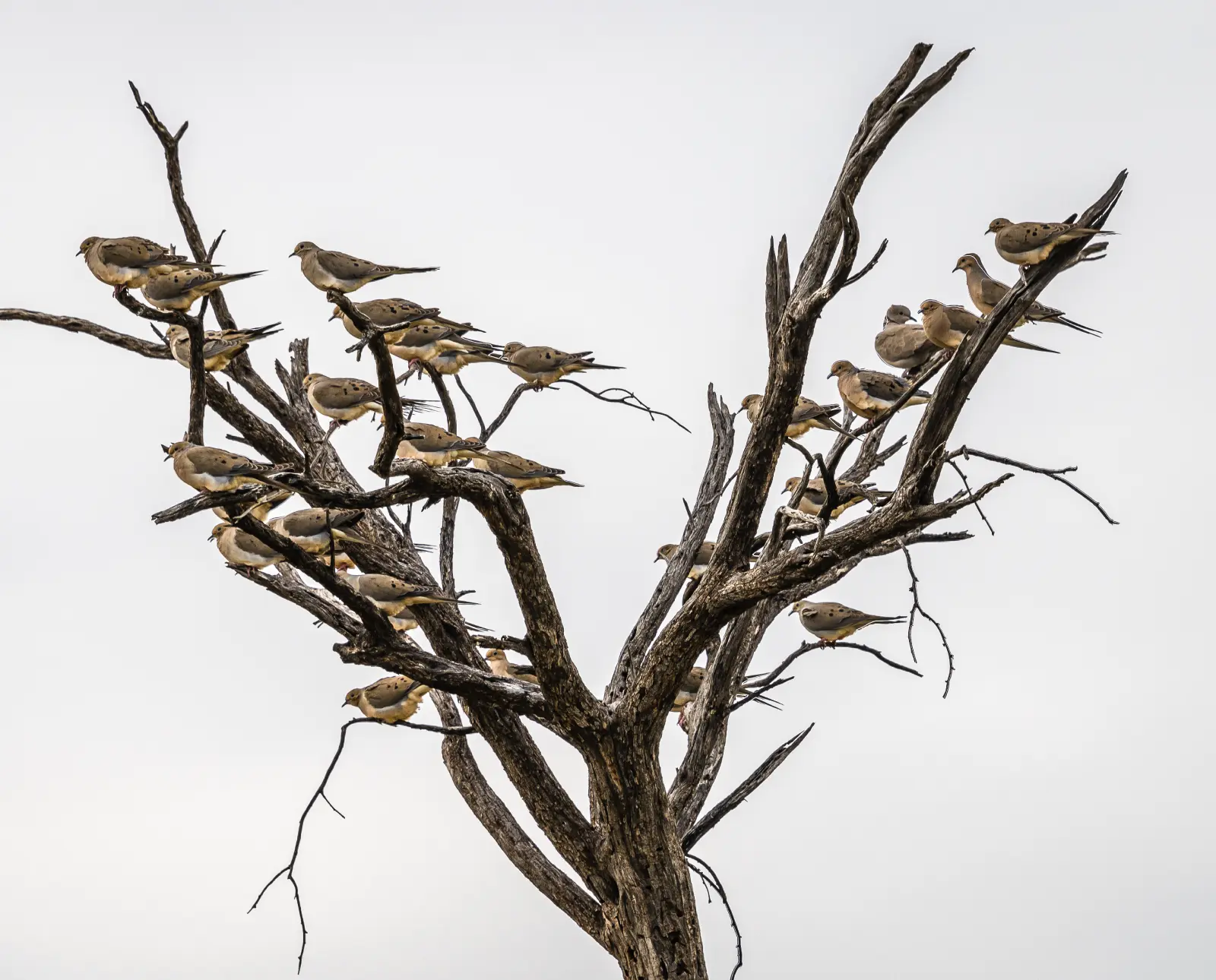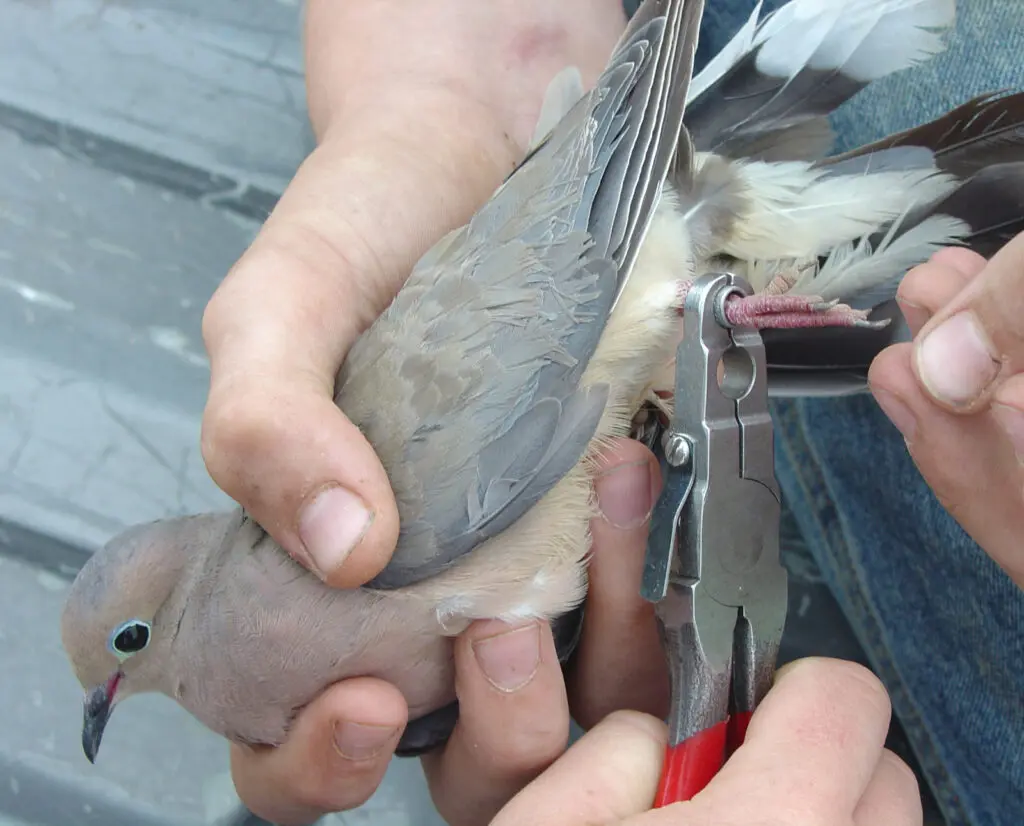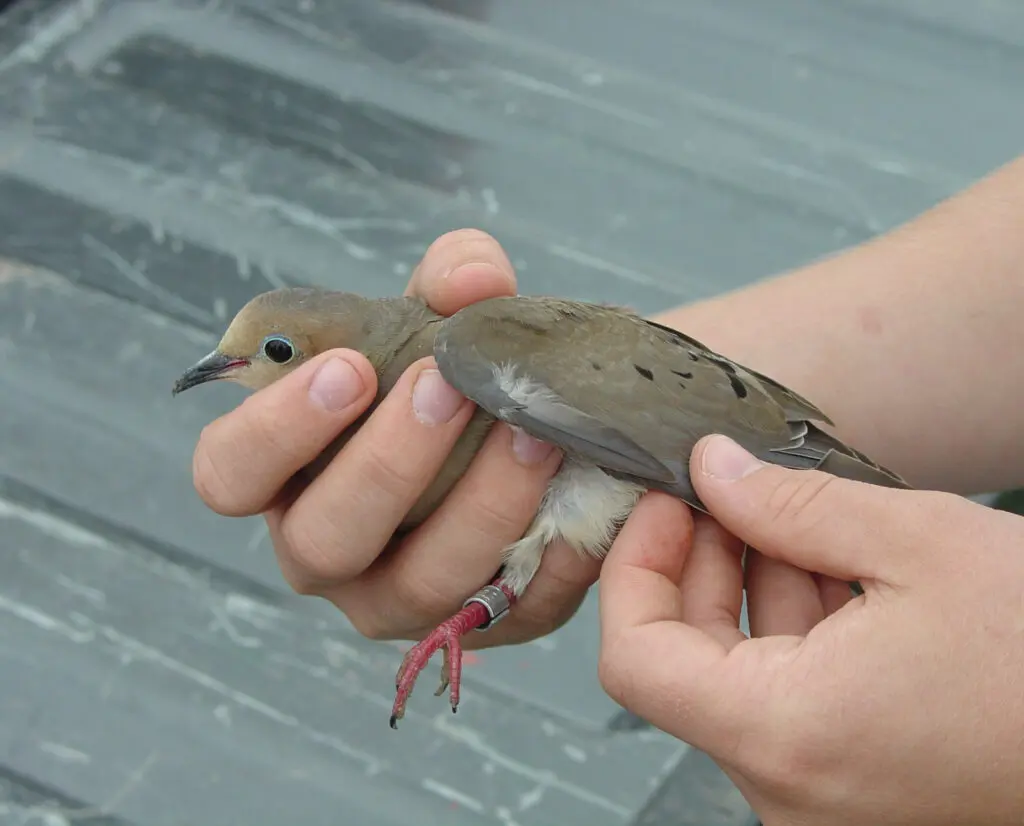Home » Dove Hunting » Understanding the Dove Migration: Local Versus Migrant Doves
Understanding the Dove Migration: Local Versus Migrant Doves

Raised in the upland bird mecca of Kansas, the passion…
Frank Loncarich has been a wildlife biologist for over 20…
Some mourning doves migrate and others do not. Leg band data helps wildlife managers understand trends in these two populations.
September 1 is one of the most popular hunting dates in the United States. In many states, it’s the opening day of dove season, which is the start of upland hunting for many wing shooting enthusiasts.
Listen to more articles on Apple | Google | Spotify | Audible
The United States Fish and Wildlife Service (USFWS) sets a range of dates, season lengths, and bag limits that states can choose from to harvest doves. Depending on each state’s latitude, there are advantages to selecting early dates, later dates, or even split dates. September 1 is the earliest the USFWS allows any state to open the season for native doves. The list of native doves includes mourning and white-winged doves, although mourning doves are by far the most commonly harvested dove in the country.
Nearly every state selects September 1 or the first Saturday in September as its opening day. This begs the question: Why would southern states want to open as early as northern states when mourning doves are migratory?
Mourning Dove Breeding Range and Migration
Although mourning doves are considered migratory, their breeding range extends across nearly all of North America, including much of Canada and Mexico. This massive breeding range means that local doves are produced within every state.
The details of mourning dove breeding can be found in this article, but the bottom line is that doves are produced nationwide. This results in locally produced birds being available for harvest early in the season. Given the breeding information, it seems obvious that hunters must be shooting local doves during the first few days of the season. Hunters do harvest plenty of local birds, but the opening day harvest is far from being exclusively local birds.
Bird migration has been studied for decades and has been determined to primarily relate to day length. In the northern hemisphere, June 21 has the maximum number of daylight hours. Every day following that date, until the winter solstice in December, represents a loss of one to three minutes of daylight.
Migratory birds have the ability to discern changes in daylight length. The shortening of daylight hours triggers migration. This makes logical sense, as birds can’t know if next week’s weather will contain a massive cold front or a heat wave. Rather, they must rely on seasonality to decide when it’s time to head south rather than weather conditions. There are exceptions to this rule, depending on a bird’s habitat and food requirements. Birds like waterfowl are often forced to fly south due to a freeze-up since they require open water for roosting and loafing. However, day length is still the primary trigger regarding migration timing for waterfowl.

Mourning Dove Banding Data in Missouri
Mourning dove banding programs exist across most states, providing insight into migration timing, routes, and patterns. Missouri has a robust banding program and happens to be where I spent most of my career working as a wildlife biologist. It’s also where I regularly hunt mourning doves.
Missouri dove banding occurs throughout June and July, so the process primarily focuses on capturing and leg banding locally produced doves and breeding adults. The majority of this banding occurs in public wildlife areas where dove fields are planted and managed for dove hunting. Several thousand doves are banded across Missouri each summer. This effort has been underway for over 15 years, resulting in a robust dataset.
Like other states, Missouri has an intense public land dove management program. This effort results in thousands of hunters going afield on opening day in pursuit of the fast-flying gray rockets. Mowed sunflowers, burned wheat, and mowed millet provide nearly unlimited food sources that doves get accustomed to visiting daily. This buffet means thousands of doves are visiting managed fields by opening day.
Throngs of hunters gather in the darkness, claiming their spots along the perimeters of the managed fields in anticipation of the morning flight. The sheer number of hunters results in a high harvest rate at these state-managed fields, which means the band return rate should be fairly high if all the opening day birds are locals. However, band return data clutters this appearlying obvious conclusion.
On average, only 11 percent of Missouri banded doves are harvested anywhere in North America. This means most banded birds somehow escape harvest, fall victim to other causes of mortality, or are unreported. Likely, it’s a combination of all three scenarios. Missouri hunters bag the majority of that 11 percent, with 10 percent of that harvest occurring within the state. However, the remaining one percent of birds are harvested in other states, mostly those south of or adjacent to Missouri. Additionally, over three-quarters of the annual harvest occurs over the first few days of the season.
This data suggests that at least some doves begin migrating south before September. Also, given the high pressure and harvest rates at public wildlife areas, the fact that 89 percent of banded birds are never reported suggests that many birds scatter across the landscape and survive far away from hunted areas.

How Local and Migrant Birds Factor into Early Season Harvests
Having worked with public lands featuring intensively managed dove fields for over two decades, I have developed some thoughts regarding how local birds and migrants factor into early season harvest.
We begin burning wheat fields in mid-July to attract local doves to slowly build the feeding population in anticipation of the September 1 dove hunting opener. We typically see the numbers increase weekly, but not in shocking numbers. We often see 200 feeding doves increase to 300 by the end of July. In August, we burn more wheat and also begin mowing sunflowers. We always provide new food every ten to fourteen days. We continue to see a steady increase in bird use, but typically, the numbers increase dramatically around mid to late August. Some years, we see an increase from 500 doves using a sunflower or wheat field spike to over 1,000 doves in a couple day period. Those are the days I believe the first mourning dove migrants arrive.
It’s a well-known fact birds imprint on food sources and roost areas, remembering year to year where to find these necessities on their arduous migration route. Doves are no different. I theorize the migrant doves land at known roost sites. Roost locations that have been imprinted in the flock over decades. These roost sites also contain local doves, and when those local doves fly out to feed, naturally, the migrant doves follow. The migrants who are over a year old may already know where the prime food source is located, but the young of the year birds are at the mercy of following the leader. The influx of migrant doves is my only explanation for the massive increases in bird use at our managed dove fields in mid to late August.
On opening day, thousands of birds are harvested around the country. The odds are that if you pursue doves early in the season, your game bag will have a mix of local and migrant birds. One of the most plentiful birds to hunt, doves provide fast flying action during the first days of fall. They also provide a tasty treat, often in the form of dove poppers. Make time for dove hunting this fall, and don’t forget to check those pink legs for a band!
Raised in the upland bird mecca of Kansas, the passion for upland birds was born at a young age for Kyle Hedges. He has now spent over 25 years managing upland game habitat on public lands in Kansas and Missouri for State Conservation Agencies. He also works as a Habitat Consultant for Land and Legacy, assisting landowners across the country with improving their properties.
Frank Loncarich has been a wildlife biologist for over 20 years, specializing in bobwhite and grassland management. He is also a Habitat Consultant for Land and Legacy.



